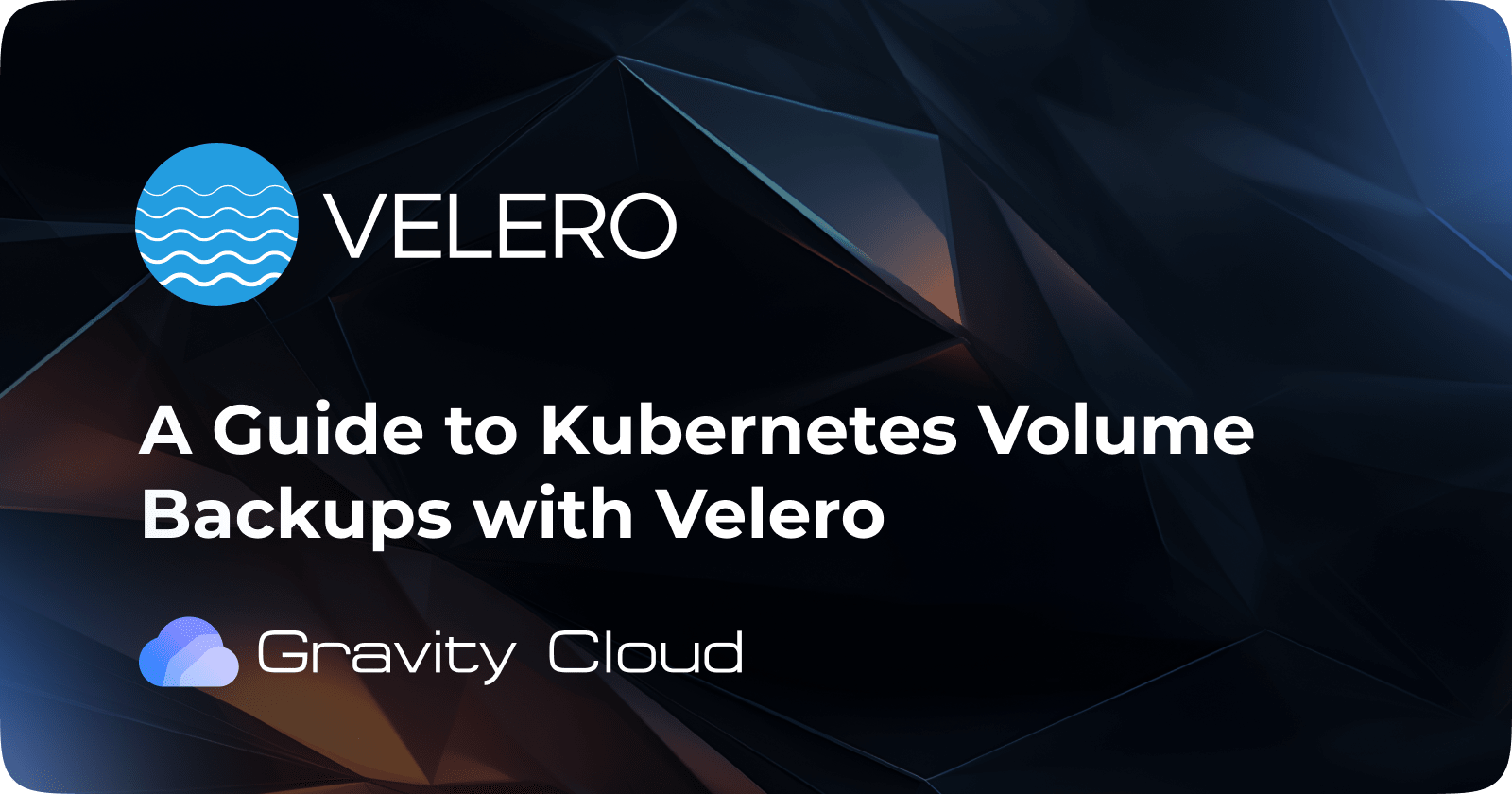Kubernetes
Velero
Ensuring Data Resilience: A Comprehensive Guide to Kubernetes Volume Backups with Velero


Introduction
Kubernetes has revolutionized the way we deploy and manage applications, offering unparalleled flexibility and scalability. However, as with any system, ensuring data integrity and resilience is paramount. While Kubernetes handles the orchestration of applications, it doesn’t inherently manage backups for persistent data. This is where tools like Velero come into play, providing a robust solution for backing up and restoring Kubernetes resources, including persistent volumes. In this blog, we’ll delve into the importance of Kubernetes volume backups and provide a step-by-step guide on how to enable them using Velero.
Why Kubernetes Volume Backups Matter
Persistent volumes (PVs) in Kubernetes are used to store data that should persist beyond the lifecycle of a pod. While Kubernetes ensures that pods are rescheduled in case of node failures, it doesn’t automatically handle backups of the data stored in these volumes. Without proper backups, data loss due to accidental deletion, corruption, or cluster failures can lead to significant downtime and financial losses.
Velero: A Kubernetes Backup Solution
Velero is an open-source tool designed to simplify the process of backing up and restoring Kubernetes resources, including persistent volumes. It integrates seamlessly with Kubernetes clusters and supports various cloud and on-premises storage solutions as backup targets (e.g., AWS S3, Google Cloud Storage, Azure Blob Storage, or even local storage).
Velero works by creating snapshots of persistent volumes and storing them in a backup repository. It also backs up Kubernetes objects, such as pods, deployments, and persistent volume claims (PVCs), ensuring that both data and application configurations are preserved.
How to Enable Kubernetes Volume Backups with Velero
Step 1: Install Velero
Before you can start backing up your Kubernetes volumes, you need to install Velero in your cluster. Here’s how you can do it:
-
Download and install the Velero CLI:
curl -L -o velero https://github.com/vmware-tanzu/velero/releases/download/v1.10.0/velero-linux-amd64 chmod +x velero sudo mv velero /usr/local/bin/ -
Install Velero in your Kubernetes cluster:
velero install --provider aws --bucket your-bucket-name --region your-regionNote: Replace
awswith your cloud provider (e.g.,aws,gcp,azure, orlocalfor on-premises setups). -
Verify the installation:
kubectl get pods -n veleroYou should see the Velero and restic pods running.
Step 2: Create a Backup
Once Velero is installed, you can create a backup of your Kubernetes resources and volumes. Here’s an example of how to create a backup:
-
Create a Backup YAML file:
apiVersion: velero.io/v1 kind: Backup metadata: name: my-backup spec: includedNamespaces: - my-app-namespace storageLocation: name: default selector: matchLabels: app: my-app -
Apply the YAML file:
kubectl apply -f backup.yaml -
Check the backup status:
velero backup get velero backup describe my-backup
Step 3: Restore from Backup
Restoring from a backup is just as straightforward as creating one. Here’s how you can restore your data:
-
Create a Restore YAML file:
apiVersion: velero.io/v1 kind: Restore metadata: name: my-restore spec: backupName: my-backup includedNamespaces: - my-app-namespace selector: matchLabels: app: my-app -
Apply the YAML file:
kubectl apply -f restore.yaml -
Verify the restore:
velero restore get velero restore describe my-restore
Step 4: Schedule Automated Backups
To ensure your data is consistently backed up, you can schedule automated backups using Velero’s ScheduledBackup feature. Here’s an example:
-
Create a Scheduled Backup YAML file:
apiVersion: velero.io/v1 kind: ScheduledBackup metadata: name: daily-backup spec: schedule: 0 0 * * * template: spec: includedNamespaces: - my-app-namespace storageLocation: name: default selector: matchLabels: app: my-app -
Apply the YAML file:
kubectl apply -f scheduled-backup.yaml
Example: Backing Up a WordPress Deployment
Let’s consider a real-world example where you have a WordPress deployment that uses a persistent volume for storing content. Here’s how you can back up the WordPress deployment and its associated volume:
-
Identify the PVC:
kubectl get pvc -n wordpress-namespace NAME STATUS VOLUME CAPACITY ACCESS MODES STORAGECLASS AGE wordpress-pvc Bound pvc-12345678-1234-5678-1234-567812345678 5Gi RWO gp2 1d -
Create a Backup:
apiVersion: velero.io/v1 kind: Backup metadata: name: wordpress-backup spec: includedNamespaces: - wordpress-namespace storageLocation: name: default selector: matchLabels: app: wordpress -
Restore the Backup (if needed):
apiVersion: velero.io/v1 kind: Restore metadata: name: wordpress-restore spec: backupName: wordpress-backup includedNamespaces: - wordpress-namespace selector: matchLabels: app: wordpress
Best Practices for Kubernetes Volume Backups
-
Regular Backups: Schedule regular backups to ensure that your data is up-to-date and recoverable in case of a disaster.
-
Test Restores: Periodically test your backups by restoring them to a different namespace or cluster to ensure that the data is intact and recoverable.
-
Use Offsite Storage: Store your backups in an offsite location, such as a cloud storage bucket, to protect against data loss due to local failures.
-
Encrypt Backups: Encrypt your backups to protect sensitive data from unauthorized access.
-
Monitor Backups: Use monitoring tools to keep track of backup and restore operations and receive alerts in case of failures.
Conclusion
Kubernetes volume backups are essential for ensuring data resilience and business continuity. With Velero, you can easily automate the process of backing up and restoring your Kubernetes resources, including persistent volumes. By following the steps outlined in this guide, you can implement a robust backup strategy that protects your data from accidental deletion, corruption, or catastrophic failures. Remember to regularly test your backups and restores to ensure that your data is safe and recoverable when needed.
Start safeguarding your Kubernetes workloads today with Velero!
I hope this blog post provides valuable insights into DevOps, Kubernetes and cost-saving benefits. If you have any questions or need further assistance, feel free to ask!
If you like this, follow us on Twitter and LinkedIn and explore our platform to help save you more cloud costs - gravitycloud.ai
Share this Article:
